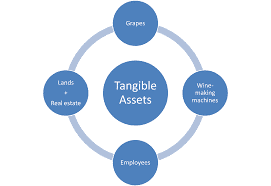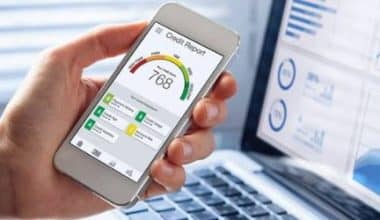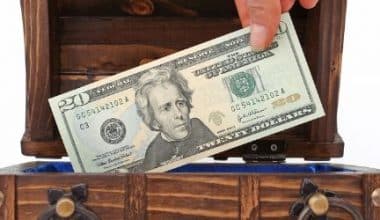When it comes to matters of assets, every company’s attention will rise because they all constitute the things that generate revenue for companies. Having considered that, it’s worth noting that, many factors work together for the success of any business. Some factors can be visible. In the same vein, there are factors we can’t see or touch with our hands. However, this article focuses on those substantial factors. That’s why in this post we will be explaining the meaning, net, examples, and the difference between tangible and intangible assets.
Tangible Assets Meaning
A tangible asset (TA) has monetary worth and is usually in the form of a physical object. Although the permeability of different markets varies, TA may usually always be traded for some monetary worth. Meanwhile, TA has a theoretical value rather than a transactional exchange value. TA is the polar opposite of intangible assets. The core thing you must understand about tangible assets meaning is that it has monetary worth and is usually in the form of a physical object. Although the liquidity of different markets varies, may usually always be traded for some monetary worth. Intangible assets have a theoretical value rather than a transactional exchange value.
Another way to explain tangible assets’ meaning is that they are assets that have a tangible shape and are worth something. Property, plants, and equipment are examples. TA can be seen and felt, but it can also be lost due to fire, natural disasters, or accidents. Intangible assets, on the other hand, do not have a physical form and include items like intellectual property, trademarks, and patents. An understanding of tangible assets’ meaning will give one the right perception of our topic.
Types of Companies With Tangible Assets
#1. Technology companies
Companies that manufacture cell phones, computers, and other electronic gadgets rely on tangible assets to make their products.
#2. Manufacturing companies
Companies that manufacture items, such as the automobile and steel sectors, have physical assets. Factory machinery, computers, and structures.
#3. Oil & Gas Industry
Companies in the oil and gas industry also have a huge amount of tangible fixed assets. Companies that drill for oil, for example, own oil rigs and drilling equipment. Oil producers are high-capital-intensive businesses, which means they need a lot of cash to buy their tangible assets.
Net Tangible Assets
This means the total assets of a business, less any intangible assets such as goodwill, patents, and trademarks, less all liabilities. Your NTA will determine your maximum revenue (MR) for the forthcoming year. To further explain, it can be seen as a company’s total assets less any intangible assets such as goodwill, patents, and trademarks, as well as all liabilities and preferred stock par value. In other words, it focuses on substantial assets such as real estate, machinery, and equipment, as well as inventory and cash.
NTA = [Entity’s Assets] – [Entity’s Liabilities] – [Entity’s Intangible Assets] – [Entity’s Disallowed Assets]
Divide the net tangible asset figure by the number of shares of common stock outstanding to get the net tangible asset per share of common stock.
Understanding Net Tangible Assets
The term “net tangible assets” refers to a company’s total physical assets less any liabilities. Cash, inventories, accounts receivable, and property, plant, and equipment are examples of TA. Accounts payable, long-term debt, and other comparable commitments are examples of liabilities.
If a firm has $1 million in total assets, $100,000 in total liabilities, and $100,000 in intangible goodwill, its net tangible asset amount is $800,000. You can calculate it by deducting $100,000 in liabilities and goodwill from the $1 million total asset value.
Examples of Tangible Assets
TA is the physical and quantifiable assets that any company operations are using. Property, plants, and equipment are examples of physical assets. These are some examples of tangible assets:
Tangible Assets Examples in Companies
These assets may or may not make up the most significant asset amounts, depending on the sort of organization. Here are two instances of physical assets:
- Industries with high Capex, such as oil and gas enterprises, real estate companies, and automobile manufacturers, account for a big share of total assets. Plant, Equipment, and Machinery are all bound together. As a result, the balance sheet will show a significant number of TA
- Companies that provide services, such as Microsoft or Infosys, will have considerably fewer assets. Patents, copyrights, and other intangible assets are managed by such corporations in vast quantities.
There are two types of tangible assets
Current Assets
Cash, inventory, and marketable securities are examples of current assets. Because these things are often utilized within a year, they may be sold more easily to obtain funds for emergencies.
Fixed Assets
Non-current or fixed assets that a corporation employs in its business activities for more than a year are known as fixed assets. They are classified as Property, Plant, and Equipment (PP&E) on the balance sheet and include assets such as trucks, machinery, office furniture, and buildings. You can record all the organization’s revenue in an income statement. Also, you need fixed assets to keep the business running.
Current and Long-Term Tangible Assets
Current assets and long-term assets are both examples of tangible assets. Also, current assets may or may not have a physical presence on-site, but they will all have a transaction value. Cash, cash equivalents, marketable securities, and accounts receivable are among a company’s most liquid, tangible current assets. The quick ratio of a corporation is calculated using all of these physical assets. Other current assets are factored into a company’s current ratio computation. The current ratio indicates how well a company’s current liabilities can be covered by its current assets. Inventory, which is not as liquid as cash equivalents but has a finite market value and might be for cash if needed in liquidation, is included in current ratio assets.
Long-term assets, often known as fixed assets, make up the second component of the balance sheet’s asset section. Real estate, manufacturing plants, manufacturing equipment, vehicles, office furniture, computers, and office supplies are examples of these assets. These assets’ expenses may or may not be included in a company’s cost of goods sold, but they are assets with genuine transactional value for the business.
On the balance sheet, tangible assets are at the cost of acquisition. Depreciation reduces the value of long-term tangible assets over time. Depreciation is a noncash balance sheet item that diminishes the value of assets over time by a predetermined amount. Because current assets are to cash in less than a year, they do not need to be over time. Inventory, for example, is a short-term asset that is typically within a year.
Importance of Net Tangible Assets
- This metric can be used to determine whether a company’s market share price is overvalued or undervalued. One can do this by comparing the value of the company’s net TA per share to the current share price.
- Liquidity risk is low for a corporation with a high net asset value.
- A high net TA value can improve a company’s stock price by providing a cushion against market unpredictability
Net Tangible Assets vs. Net Tangible Assets Per Share
The term “net tangible assets per share” is frequently used instead of “net tangible assets.” The net tangible asset number of a corporation is divided by the total number of shares outstanding to determine net tangible assets per share. A company’s net tangible assets per share are $2 if it has $1 million in net tangible assets and 500,000 shares outstanding.
When conducting a comparative analysis of organizations within an industry, net TA per share is useful. For example, automakers may have a high amount of net TA per share, whereas a software company with a large degree of intangible assets may have a considerably smaller figure per share. As a result, this metric should only be used when comparing organizations in the same industry.
What are Tangible Assets in Accounting?
The accounting for these assets is a very important matter. These properties are considered long-term assets since they are held for an extended period of time. These assets are recorded in the books under one or more asset classes, with corresponding cumulative depreciation contra accounts.
On the other hand, current assets fall under the category of short-term assets because they may easily be sold for cash. As soon as they are sold, the proceeds are recorded as income.
The book value of these assets is what is shown on the balance sheet. All the expenses incurred in preparing the asset for its planned usage might be added in. Legal fees, travel expenses, the cost of any necessary tests, and any taxes that aren’t refundable could all fall into this category. The cost of PPE is not based on its current market value.
Is Bitcoin Intangible Asset?
Today, cryptocurrencies such as Bitcoin and Ethereum are recorded as intangible assets on a company’s balance sheet and their past prices are used to determine their value. When the price falls by a significant amount, those assets are judged to be in a depreciated state, yet the loss incurred by them cannot be made up in the financial statements when the price increases.
Is a Furniture an Asset?
They are referred to as fixed assets or long-term assets due to the fact that they cannot be turned into cash simply and with a reasonable degree of certainty within a period of one year. What exactly are these “fixed assets”? These are assets that can be touched and examined, and they include things like buildings, land, fixtures, equipment, cars, machinery, and furniture. Long-term assets are also known as tangible assets.
Difference Between Tangible and Intangible Assets
The terms “tangible” and “intangible” refer to two different sorts of assets. Physical assets or property owned by a corporation, such as a computer equipment, are examples of tangible assets. Tangible assets are the most common sort of assets businesses can use to create their goods and services.
Tangible assets
This provides the means for organizations to generate their goods and services, making them the backbone of their operations. Because TA is a physical asset, they can be harmed by natural occurrences. Non-physical assets that add to a company’s future value or worth are known as intangible assets. And they can be significantly more valuable than tangible assets. Both of these assets are first documented on the balance sheet, which aids investors, creditors, and banks in determining the company’s worth.
Because tangible goods have a limited value and life duration, they are also the easiest to evaluate. TA is first represented on the balance sheet, but as they are depleted, they are moved to the income statement.
Inventory, for example, is a tangible asset that, when used, becomes part of a company’s cost of goods sold. The costs directly associated with the production of a good are referred to as the cost of goods sold. Inventory is recognized in the cost of goods sold as it is used up in the production process.
Depreciation is a method of accounting for the wear and tear on tangible assets over the course of their useful lives.
Intangible Assets
Accounting can be more difficult when it comes to valuing intangible assets. Some intangible assets, such as a patent or license, have an initial purchase price. Intangible assets, like fixed assets, are first recognized as long-term assets on the balance sheet.
What Constitutes the Tangibility of an Asset?
When something can be touched and has a true, physical presence, we say that it has palpable qualities. It’s possible that some definitions of tangible include the phrase “the asset can be seen,” yet this phrase might also be used to describe things that you can’t touch (i.e. digital currency balances can be seen on a monitor).
What Is the Main Benefit of Tangible Assets?
The intrinsic worth of tangible assets comes from the fact that they may be used in everyday life. For instance, the property has value because it can be converted into a variety of different things, such as buildings, parks, agricultural land, educational institutions, community centers, parking lots, and even homes for animals.
Intangible assets, on the other hand, defy comparison in this regard. The proportion of ownership in a company that is represented by a single share of stock is what gives that share its value. Even if you are given a piece of paper that certifies your ownership of the asset, you won’t be able to utilize it for anything other than the purpose it was intended: to serve as a vehicle for investment.
What are the Best Tangible Assets?
The most successful tangible investments include things like land, gold, real estate, and machinery. Therefore, it is not a waste of money to invest in them. When all of the potential returns on investment in the land are considered, it becomes clear that land is the most tangible investment. When held as an asset, land continues to be in good shape over the course of many years and does not require a great deal of upkeep.
What are Not Tangible Examples?
Goodwill, brand awareness, copyrights, patents, trademarks, trade names, and customer lists are all examples of intangible assets. Other examples include patents and trademarks. Intellectual property and goodwill are the two distinct types of intangible assets that can be distinguished from one another. Your intellectual property consists of anything that you concoct in your head, like a design, for example.
Conclusion
TA is a type of asset that is an integral and important part of a business’s assets and plays a critical role in properly carrying out business operations. However, because fixed assets decline over time and depend on the depreciation method used, the figure may differ from one company to the next. However, to analyze and measure their worth with any degree of accuracy, such assets must be separated from intangible assets, which is exactly what net tangible assets are for.
FAQs
Is capital an asset?
Capital assets are significant pieces of property such as homes, cars, investment properties, stocks, bonds, and even collectibles or art. For businesses, a capital asset is an asset with a useful life longer than a year that is not intended for sale in the regular course of the business’s operation.
Is petty cash an asset?
The petty cash account is a current asset and will have a normal debit balance (debit to increase and credit to decrease).
Is vehicle an asset?
Is a Vehicle an Asset? A vehicle that you own outright is generally an asset. However, a financed vehicle could be considered a debt instead of an asset. The fair market value of your vehicle and the amount you owe on it will determine whether it is an asset or a debt.






